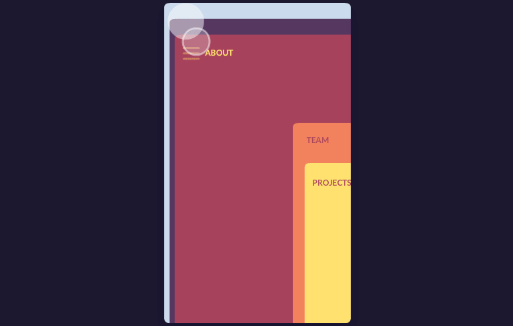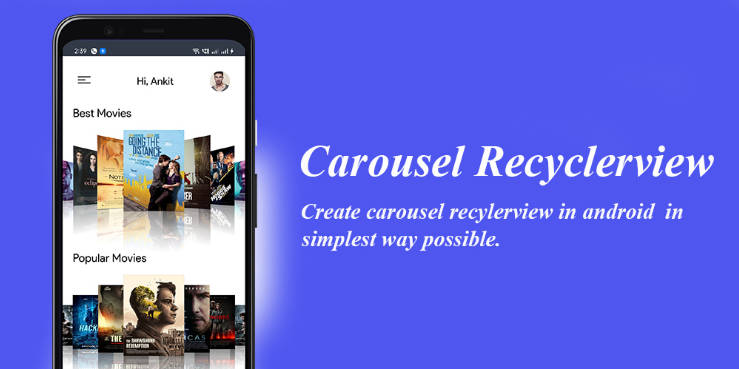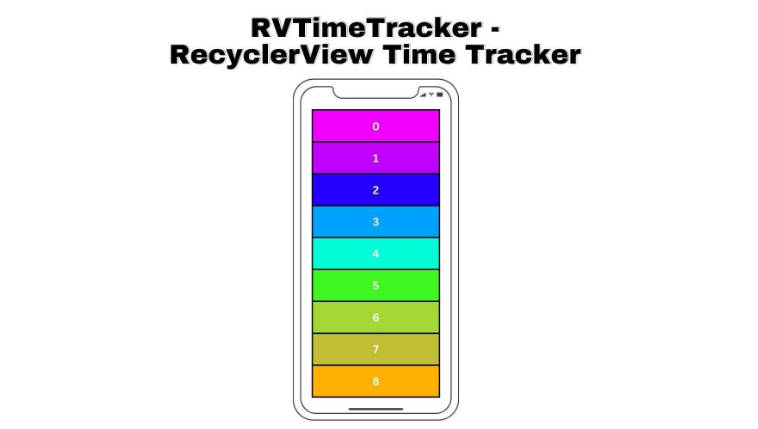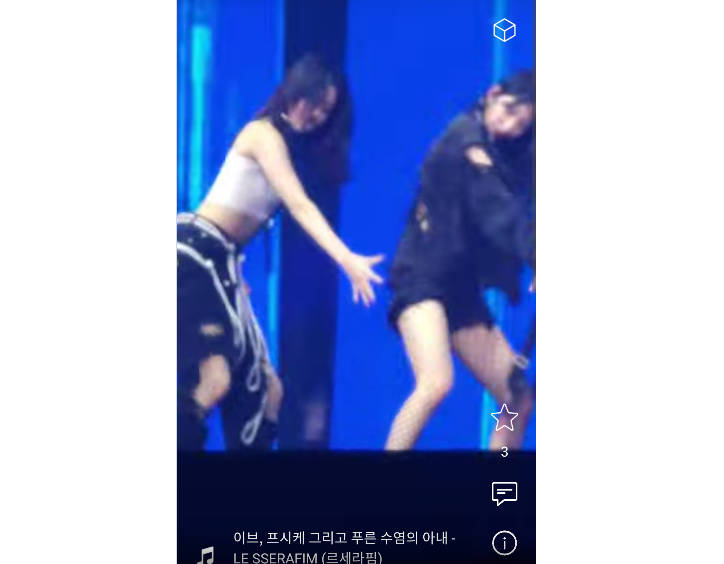Autoplayable RecyclerView Items
ARVI will enable you to make your feeds more interactive and appealing to your end users without the need to spend a lot of your valuable time on the implementation.
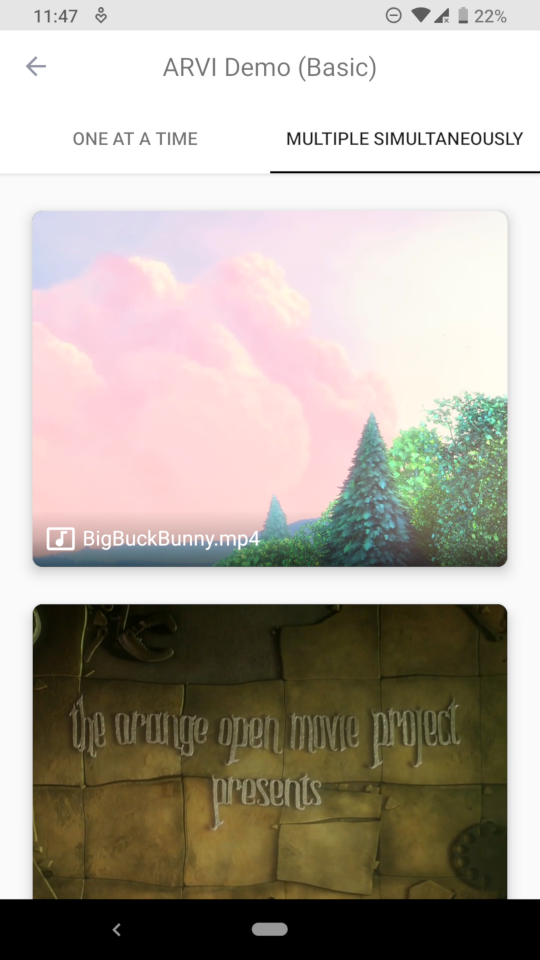
Getting Started
Prerequisites
1. Make sure that you've added the jcenter() repository to your top-level build.gradle file.
2. Enable the jetifier and androidX support in the top-level gradle.properties file.
3. Update your compileSdkVersion in the module-level build.gradle file to 28+.
4. Replace your com.android.support.appcompat.* dependency with the new androidx.appcompat.* alternative.
5. Add the ExoPlayer dependency to the module-level build.gradle file.
ARVI Dependencies
ARVI is comprised of several library modules, namely:
arvi- core functionality (Required)arvi-adapster- Adapster adaptation (Optional)arvi-ktx- common extensions (Optional)arvi-utils- common utils and helpers (Optional)
The basic implementation would have to include the core module
implementation "com.arthurivanets.arvi:arvi:X.Y.Z"
Which should be added to your module-level build.gradle file.
After that you can proceed with further implementation.
Basic Implementation
Basic implementation consists of 3 straightforward steps, which include the proper handling of the system memory claims, creation of the playable Item View Holder, and the incorporation of the Playable Items Container.
The steps you need to take:
1. Ensure the proper release of the active players when the application goes into background (System Memory Claims)
Kotlin (click to expand)
Basic
With arvi-ktx
Java (click to expand)
2. Implement your Item's ViewHolder based on the PlayableItemViewHolder
IMPORTANT: Your ViewHolder's layout.xml file must contain a PlayerView child with an id @id/player_view.
See: BasicVideoItemViewHolder and item_video.xml
Kotlin (click to expand)
Java (click to expand)
3. Replace the regular RecyclerView with the PlayableItemsRecyclerView
IMPORTANT: PlayableItemsRecyclerView should be bound to the lifecycle of the Activity/Fragment (Activity/Fragment lifecycle events should be propagated to the PlayableItemsRecyclerView) in order to ensure the correct handling of the item video playback.
See:
PlayableItemsRecyclerView,BasicVideoItemsRecyclerViewAdapter,BasicVideosFragmentandfragment_videos.xml
Kotlin (click to expand)
Java (click to expand)
For more advanced use cases
See: Advanced Use Cases
Adapster-based Implementation
Adapster-based implementation requires both the official Adapster and arvi-adapster module dependencies.
implementation "com.arthurivanets.arvi:arvi-adapster:X.Y.Z"
While the implementation itself shares most of the steps with the Basic Implementation, one of the things that should be taken into account is the fact that the implementation of your Item ViewHolder should be based on the AdapsterPlayableItemViewHolder instead of the PlayableItemViewHolder.
Kotlin (click to expand)
Java (click to expand)
See:
VideoItemsRecyclerViewAdapter,AdapsterVideosFragment,AdapsterPlayableItemViewHolderandVideoItemViewHolder
For more advanced use cases
See: Advanced Use Cases
Advanced Use Cases
Sometimes you require something more than a basic implementation, whether it's an ability to enable the caching of your videos or a way to authorize your HTTP Video requests, you name it; for that reason a list of the most common advanced use cases has been compiled.
Most common advanced use cases include, but not limited to:
1. Video Caching
In order to enable the video caching you should provide an instance of the ExoPlayer Cache via the ARVI Config to your Item ViewHolders, and then use the provided Config within each corresponding Item ViewHolder.
Kotlin (click to expand)
Adapster-based
Java (click to expand)
Adapster-based
The general ExoPlayer Cache instance can be easily created using the utility extension methods found in the ArviExtensions of the arvi-ktx module, or you can resort to your own ExoPlayer Cache instance creation approach; choose the approach that fits your requirements the best.
For more details
See:
BasicVideosFragment,BasicVideoItemsRecyclerViewAdapter,BasicVideoItemViewHolder,AdapsterVideosFragment,VideoItemsRecyclerViewAdapter,VideoItem,VideoItemViewHolder,VideoItemResources,Config,ArviExtensions,Cache
2. HTTP Video Request Authorization
In cases when your video requests require authorization, you can use the RequestAuthorizer to provide the necessary auth token whenever the player requests it. The created RequestAuthorizer should be associated with the ArviHttpDataSourceFactory and passed around in the ARVI Config object.
RequestAuthorizer
Kotlin (click to expand)
Java (click to expand)
ARVI Config
Kotlin (click to expand)
Java (click to expand)
3. ViewHolder Playback Control
All Playable Item ViewHolders are capable of controlling almost every aspect of the corresponding playback, thus giving you more power in terms of the actual implementation.
For more details on what possibilities the Playable gives you
See:
Playable
4. ARVI Players
All the Players created using the PlayerProviderImpl can be used as stand alone players, as they are totally independent entities, the only thing to remember here is that you should properly handle the player binding/unbinding events to avoid the potential memory leaks and other related issues.



